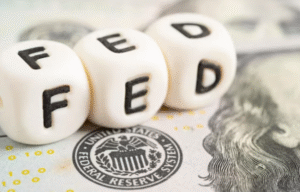$SPY $VOO $IVV
#ETF #IndexFunds #PassiveInvesting #ActiveManagement #InvestmentTrends #StockMarket #Finance #Investing #WealthManagement #MarketAnalysis #ETFFlows #AssetManagement
Traditional index funds saw a significant slowdown in inflows during January, as investors leaned towards actively managed exchange-traded funds (ETFs) in search of higher returns and more strategic allocation. Historically dominant passive vehicles, including major index-tracking ETFs such as $SPY, $VOO, and $IVV, captured less than 25% of total net inflows last month. This marks a notable shift in sentiment, reflecting skepticism about passive strategies amid ongoing market fluctuations. The move suggests that as volatility and uncertainty persist, investors are increasingly looking for funds that offer more flexibility and, potentially, enhanced returns through active management. This represents a departure from the nearly two-decade trend of passive fund dominance, signaling that market participants may be reconsidering traditional investment approaches.
The shift to actively managed ETFs aligns with broader concerns about economic uncertainty, interest rates, and sector-specific performance variations. With the Federal Reserve maintaining a cautious stance on rate policy and inflation showing signs of persistence, investors appear to be favoring strategies that allow portfolio managers to make tactical decisions rather than following a rigid index. Active ETFs, which have seen record growth in recent years, offer investors the ability to capitalize on short-term opportunities and mitigate risks associated with broad market downturns. This trend is further reinforced by increased retail participation in financial markets, with investors seeking exposure to niche themes such as artificial intelligence, growth stocks, and commodities—areas where active funds can potentially outperform passive strategies.
Despite the diminishing market share of passive funds, index ETFs still hold a dominant position in terms of assets under management. However, their decelerating growth highlights a critical change in investor preferences, especially in the face of macroeconomic uncertainty. This shift has benefited asset managers focusing on active strategies, with firms such as JPMorgan and Dimensional Fund Advisors seeing strong inflows into actively managed products. Major financial firms have been expanding their active ETF offerings, capitalizing on demand for actively managed exposure in equity and fixed-income markets. If this trend continues, it could challenge the prevailing narrative that passive investing is the superior long-term strategy, as market conditions in 2024 remain unpredictable.
While the long-term debate between passive and active investing remains unresolved, the recent weakness in index ETF flows indicates that investor sentiment is shifting in response to economic and market factors. The growing preference for active management reflects a desire for adaptive strategies that seek to outperform market benchmarks rather than merely track them. If macroeconomic conditions remain uncertain, passive index funds may continue to see lackluster inflows, further strengthening the case for active ETFs. However, over time, the long-term cost advantages and simplicity of passive investing may allow index funds to regain favor among investors, particularly as market conditions stabilize. Until then, financial markets will likely continue to see an evolving landscape where active strategies play an increasingly significant role in portfolio allocations.











Comments are closed.